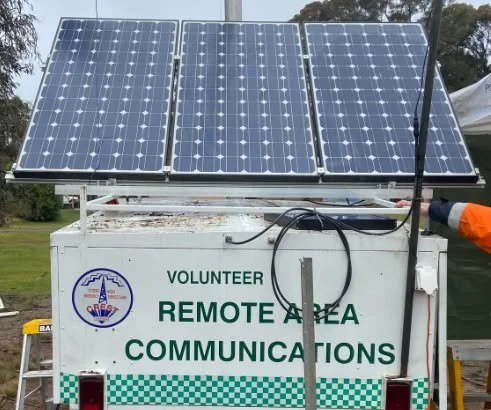Community Communications - Reflections from the May DisasterWISE Get Together
In May, the DisasterWISE Network convened an online Get-Together to discuss community communications welcoming guests from Merri-bek Tech and CREST NSW. Two community-led groups doing vital work in disaster communications and local response. The session created space to listen, learn and reflect on what it takes to keep communities strong and connected before, during and after a crisis.
The Role of Everyday Tech in Extraordinary Times
Merribek Tech a volunteer group supporting the Merribek community (in Melbourne’s inner north), shared how they’ve been using low-cost, locally maintained tools to boost digital inclusion, emergency readiness and community connection. Their philosophy revolves around the belief that tech doesn’t have to be complex to be powerful; it just has to be accessible and trusted.
Jade Ambrose from Merri-bek Tech shared insights on building local web infrastructure across neighbourhoods, to offer affordable alternatives to big tech while strengthening local resilience in response to the climate crisis. Jade's presentation highlighted the importance of community-driven technology solutions in enhancing disaster preparedness and response. By establishing local web infrastructure, communities can maintain communication channels during emergencies, reducing reliance on external networks that may fail during crises. This approach not only fosters technological self-sufficiency but also empowers communities to take proactive roles in their resilience strategies.
We heard about portable community Wi-Fi setups, solar-powered charging hubs, and DIY mesh networks; all designed to fill gaps when official systems fail or fall short.
We then welcomed Terry Matts from CREST NSW (Citizens’ Radio Emergency Service Teams) who gave us a look into his long-standing voluntary work in supporting emergency communications during disasters, with particular focus on regional and remote areas. Terry shared insights on the role of volunteer-led communications in disaster resilience and highlighted how trained volunteers provide specialist radio communications support to emergency and community organisations during disasters. This support is crucial in maintaining communication channels when conventional systems fail, with local alternatives for communities to remain connected and informed.
Terry emphasised the importance of integrating volunteer communication services into broader emergency response strategies, advocating for greater collaboration between community groups and emergency services. He also discussed the need for ongoing training and support for volunteers to adapt to evolving technologies and challenges in disaster scenarios. There are also many affordable opportunities for local communities to just start small, and the message is just start!
What stood out from the Get Together was the importance of existing local-led communications systems that can play a vital role in disaster and first response. As communities, we need to assess what current systems are in place; consider the risk of power outages, mobile phone towers being down and possible isolation – having these important conversations as a community now could be of benefit for future disasters and communications. We heard about CB radio systems being already used by pony clubs, scout groups and farmers, encouraging us all to think about how these systems could be leveraged.
From this Get Together, three key insights emerged:
Low-tech can be high-impact. Simple, locally maintained solutions are often the most resilient.
Trust is infrastructure. Relationships built before a disaster are what make communications work during one.
Work with what you have Grassroots innovations can offer solutions, bring people on the journey and build inclusive systems that are accessible for all members of your community.
What’s Next?
DisasterWISE will continue to hold space for these conversations and to showcase the brilliant, often under-the-radar work happening across our communities. If you’re experimenting, connecting, or building something in your local patch, we want to hear from you.
Reflection Questions:
What communications systems already exist in your community? What role does it play in inclusion, connectedness and disseminating vital information to community? How could this be leveraged in a disaster? What improvements need to be made?
Missed the Get-Together?: Watch the Recording here
CREST - Citizens Radio Emergency Service Teams

